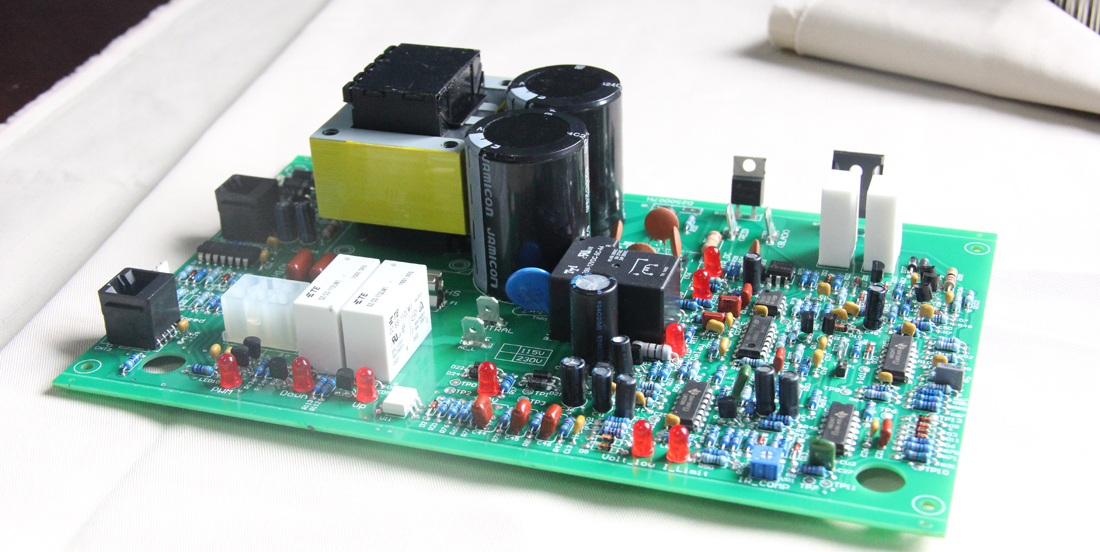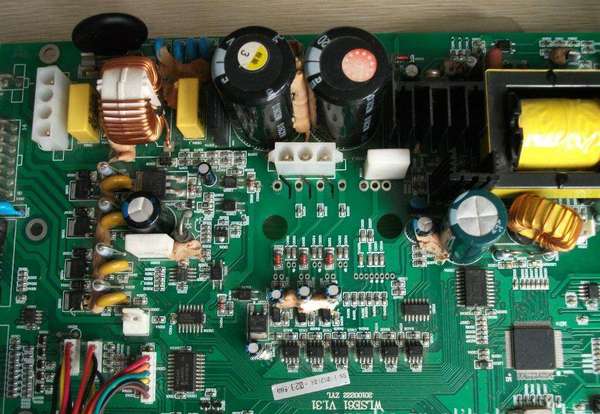
Surface assembly method of PCBA processing
PCBA processing is to form a finished electronic product after a complete set of processing processes such as PCB boarding, SMT patch processing, DIP plug-in processing, quality inspection, testing, and assembly. This processing process is called PCBA processing, and PCBA can also be said to be this Processed circuit boards. There are many kinds of PCBA, and there are several assembly methods for PCBA processing. The following professional PCBA factory Petter Technology will briefly introduce some assembly methods for you.
1. Single-sided mixed packing
The circuit board used for assembly is a single-sided PCB. Single-sided mixed assembly means that SMT patches and DIP plug-in components are distributed on different sides of the PCB. The soldering side is a single side, and the patch side is another separate side. This type of assembly method adopts single-sided PCB and wave soldering process, and there are two specific assembly methods:

1. Paste first and insert later: that is, first mount SMC/SMD on the B side of the PCB, and then insert THC on the A side.
2. First insert and then paste method: first insert THC on the A side of the PCB, and then install SMD on the B side.
Two, double-sided mixed
The circuit board used in the assembly of this PCBA processing is a double-sided PCB. SMT patches and DIP inserts can be mixed and distributed on the same side or both sides of the PCB. In this type of assembly method, there is also the difference between posting first and posting SMC/SMD. Generally, it is reasonably selected according to the type of SMC/SMD and the size of the PCB. Usually, the first paste method is used. There are two commonly used assembly methods for this class:
1. SMT components and DIP components on the same surface: SMT component and DIP plug-in components are on the same side of the PCB; DIP plug-in components are on one or both sides. This type generally uses SMC/SMD first and then plug-in DIP.
2. There are SMT patch components on one side and both sides of the DIP component: put the surface mount integrated chip (SMIC) and THT on the A side of the PCB, and put the SMC and small outline transistor (SOT) on the B side.
3. Full surface assembly
All circuit boards assembled by this PCBA process are single-sided and double-sided PCBs, and there are only SMT components on the PCB without THT components. Since the current components have not yet fully realized SMT, there are not many such assembly forms in practical applications. There are two ways to assemble this class:
1. Single-sided surface assembly.
2. Double-sided surface assembly
With the development of PCBA assembled electronic products in the direction of miniaturization and high assembly density, electronic assembly technology is also dominated by surface SMT mounting technology. However, there will still be a certain number of through-hole components in some PCB circuit boards. The assembly of both plug-in components and surface mount components is called mixed assembly, referred to as mixed assembly, and the assembly of all surface mount components is called full surface mount.
The PCBA assembly method and its process flow mainly depend on the type of assembly components and the assembly conditions. It can be roughly divided into four types: single-sided mounting process, single-sided mixed mounting process, double-sided mounting process and double-sided mixed mounting process.
3. Single-sided mounting process
Single-sided mounting means that the components are all mounted components, and the components are all assembled on one side of the PCB. The main process of single-sided mounting process: printing solder paste → patch → reflow soldering → cleaning → testing → repair.
4. Single side mixed process
Single-sided mixed assembly means that the components include both mounted components and inserted components, and the components are assembled on one side of the PCB. The main process of the single-sided mixed assembly process: printing solder paste → patch → reflow soldering → plug-in Wave soldering→cleaning→testing→rework.
5. Double-sided mounting process
Double-sided mounting means that the components are all mounted components, and the components are distributed on both sides of the PCB. The main process of the double-sided mounting process: printing solder paste on A side → patch → reflow soldering → plug-in → pin bending → flipping → pointing adhesive on B side → patch → curing → flipping → wave soldering → cleaning → Inspection → Repair.
6. Double-sided mixing process
Double-sided mixed assembly refers to the assembly in which components include both mounted components and plug-in components, and the components are distributed on both sides of the PCB. The main process of the double-sided mixed assembly process: printing solder paste on A side → patch → reflow soldering → plug-in → pin bending → flipping → pointing adhesive on B side → patch → curing → flipping → wave soldering → cleaning → Inspection → Repair.









